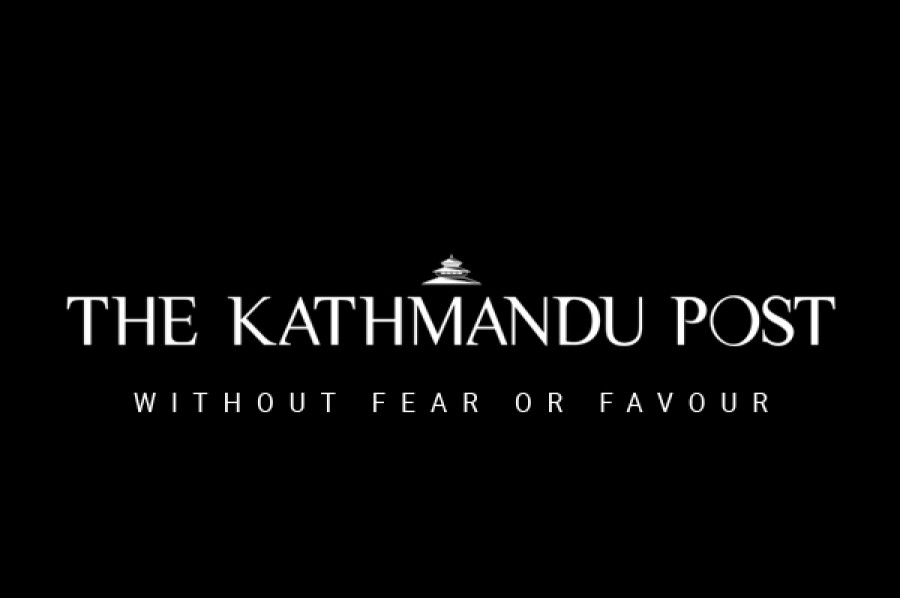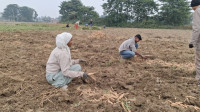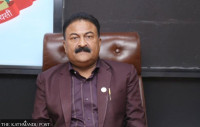National
From Ground Zero: Tikapur tangle needs political solution; 24-hour curfew for last five days
Deserted streets, beefed-up security, a fearful population and sinister rumours. A 24-hour curfew for the last five days. This has been the scene in this far-western Tarai town since eight people, including a senior police officer, were killed by an angry mob on Monday.
Akhilesh Upadhyay
Deserted streets, beefed-up security, a fearful population and sinister rumours. A 24-hour curfew for the last five days. This has been the scene in this far-western Tarai town since eight people, including a senior police officer, were killed by an angry mob on Monday.
People are still struggling to come up with a coherent story line to the events. It will be some time, if at all, before they will be able to put scattered pieces together to answer the key questions: what led to such intense violence against the security forces? What led to the death of an 18-month-old by-stander? And why were the local administration and police so underprepared to tackle the mayhem on Monday when the writing was on the wall?
“It will perhaps be safe to conclude that police intelligence failed that day and that they were far too late in reacting to the security challenges posed by a big and angry crowd,” said a senior security official. Another question that perhaps will remain a mystery is whether there was infiltration in the largely-Tharu protests.
In the last couple of days, small groups of locals have begun to huddle in their immediate neighbourhood to make sense of the turn of events. They are also talking of amity and the need to start getting on with their lives. All day Thursday and early on Friday, civil society groups were discussing how a goodwill public rally would help defuse tension.
But all sides—the Pahadi and Tharu populations, the security forces—acknowledge the underlying tension remains. And that the issue is political and that it needs to be addressed politically.
“Goodwill rallies are fine but they can only do so much,” says Chitra Bahadur Chaudhary, a schoolteacher. “It’s a political problem and needs a political solution. Communal harmony has suffered because the problem is political. You can’t just expect people to come out and hug each other and say, let’s forget the underlying problems.”
The communal tension in Tikapur, and indeed the larger demand for Tharuhat province in all of Kailali district and beyond, has been festering for a long time. There have been some long-held ‘triggers’ and some fresh ones.
The then CPN (Maoist) swept all six Kailali constituencies in the 2008 Constituent Assembly elections. The Tharu population overwhelmingly voted in favour of the party as they saw it as their champion which would support a separate Tharuhat province in a new federal Nepal.
By the 2013 elections, there was major disenchantment towards the Maoists. The Tharu vote blocks were deeply divided and many of them had gone back to the Nepali Congress and the CPN-UML. In Kailali, the UCPN (Maoist) won only one seat; the Madhesi Janadhikar Forum-Loktantrik led by Bijaya Kumar Gachhadar won two, including the constituency where Tikapur is located.
“Forum was seen as a new torch bearer for the Tharus,” said Chaudhary. “The Maoists, like the NC and the UML, were seen as a Pahadi party.” But there was also palpable frustration that the Forum did not have much of a voice in Kathmandu, unlike the Maoists before the 2013 elections.
When Forum Chairman Gachhadar signed the 16-point agreement supporting an eight-province model without delineation, there was deep disappointment.
But, there was also a sense that there had to be some kind of a trade-off with the Pahadi stakeholders if the constitution was going to come out at all. There was also expectation that the Tharuhat demand would be addressed when the delineation did take place.
When the six-province delineation came out and Tharu demands were ignored, the population felt agitated. “But it was the seven-province draft that came soon after that really angered the Tharus,” says Chaudhary. The demand for Akhanda Sudur Paschim, the undivided Far West, and the Karnali region, was met because the seven-province model continued the old power dynamic that maintained the status quo. “Sher Bahadur Deuba (NC), Bhim Rawal (UML) and Lekhraj Bhatta (UCPN-Maoist) were the three dominant leaders in the Far West and the three parties were forced to listen to them,” said Nathuram Chaudhary, a teacher at Tikapur Multiple Campus. In contrast, the Tharus had no powerful representative in Kathmandu who could fight on their behalf. On August 13, there was a cross-party mass rally in Tikapur where leaders from all major Madhes-based parties and the Baidya party addressed the restive Tharu mass. It turned out to be a major trigger for the Monday protests that saw Tharu activists attack the police. Nepali Congress lawmaker Amresh Kumar Singh was the only leader from the ruling parties to address the rally. Both Tharu and Pahadi analysts say that he made provocative remarks against the Nepali state.
“He [Amresh Singh] made very insensitive and highly inflammatory remarks at the rally,” said Dhirendra Shahi, a school principal in Tikapur. “He basically said, the Bhumiputra (son of the soil) should drive the Pahadi population out. This, more than anything else, instigated the Tharus.”
The Pahadi population here is especially angry with Singh and Sadbhawana leader Rajendra Mahato, neither of whom is from the Tharuhat region. They believe that Singh and Mahato came here primarily because their attempts to raise a movement in the eastern and central Tarai had failed and they thus desperately needed a Tharu constituency to rise up against Kathmandu. “If we were as aggressive as they were on that day [the August 13 mass rally] there would have been a bloodbath in Tikapur,” said Shahi.
THE EVOLUTION OF THARU ACTIVISM
The rally in Tikapur was led by the Tharu Sangharsha Samiti, a committee under the Kalyankari Sabha, which was started as a social organisation back in the 1940s. Headed now by a Bhairahawa-based engineer Ghaniram Chaudhary, it became politically active in the dying days of the first CA when the Tharus felt that they needed to become politically active so as to pressure the CA to establish a Tharuhat province.
It now has units in 20 districts across the Tarai/inner Tarai—one is in the Capital. “When we saw that the first CA was not able to deliver on the two core principles of federal demarcation—identity and capacity—our movement took a new turn,” recalled Chitra Bahadur. “After the 2013 elections, the Tharus felt hugely sidelined in national politics, including in Tikapur. The bias of the police and administration in favour of Pahadis became even more pronounced.”
In the aftermath of the police killings, properties owned by Tharus, including a TV showroom in Tikapur that belongs to one Shiva Narayan Chaudhary, were set fire. Much of the property vandalised are shops and ghumtis owned by small entrepreneurs like barbers and cycle/bicycle repairmen.
The incidents of arson ceased after the arrival of an Army unit late on Monday. However, there are now fears that a long-standing security presence would lead to harsh treatment of the Tharus, as during the conflict years.
Over 400 Nepal Army personnel currently remain deployed in and around Tikapur, especially in six VDCs that are seen as potential flashpoints.
A NEED FOR CONCILIATION
There is currently an urgent need to repair relations between the Tharu and Pahadi communities. “If the current tension continues,” says Shahi, the school principal, “I fear that an even worse incident could take place.”
For this to happen, senior political leaders need to cease their polarising rhetoric and make active efforts at conciliation. The curfew needs to be loosened somewhat so that representatives from the two communities can engage with each other. The longer the curfew continues, the longer will members of each community be ghettoised along with their own, preventing efforts at reconciliation.
In the medium term, boundaries of federal provinces will have to be revised in such a way as to assuage the fears of both the Tharu and Pahadi communities. Towards that end, senior leaders in Kathmandu as well as leaders in Kailali have to demonstrate a sense of pragmatism. “A durable solution will be possible only when proponents of an undivided Far West develop a more practical and flexible approach in the future,” said Raju Hamal, former district president of FNCCI Kailali. According to some analysts, it should be emphasised that the federal structure will be based both on identity and geography, and not on only one of these two principles.
Needless to say, Nepal’s top leaders will need to consult widely, devise borders with much subtlety and make major efforts to reach out to the population in order to restore harmony in districts like Kailali for the long term.




 9.12°C Kathmandu
9.12°C Kathmandu













%20(1).jpg&w=300&height=200)

